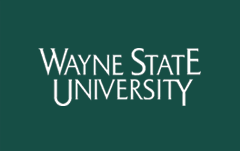Off-campus WSU users: To download campus access dissertations, please use the following link to log into our proxy server with your WSU access ID and password, then click the "Off-campus Download" button below.
Non-WSU users: Please talk to your librarian about requesting this dissertation through interlibrary loan.
Attendance And Absence Of The Laity: Acknowledging The Rhetoric Of An American Protestant Megachurch
Access Type
WSU Access
Date of Award
January 2024
Degree Type
Dissertation
Degree Name
Ph.D.
Department
English
First Advisor
Donnie Sackey
Second Advisor
Jeff Pruchnic
Abstract
Current approaches to exploring and acknowledging the rhetoric at work in American Protestant Churches (APMs) neither identify particular stylistic elements nor do they explore how members employ them to create and enforce a collective reality. As a corrective to the missing perspective of those attending APMs, I surveyed and interviewed actual attendees of an APM. This dissertation responds to the call from Thumma and Travis and from DePalma and Ringer to find out from those attending a megachurch in greater granularity with the use of comprehensive interviews to explain, not growth, per se, but to explain why attendees, in their own words, attend. The results of the survey and interview questions revealed “the message” as extremely important and influential to their decision to visit, return, and continue to attend. The majority of respondents indicated the nuance of the message as “story” as to how their APM makes matters of faith accessible and real for them. However, it is not just that stories are told but the way stories function as a mode of discourse that individuals use to construct meaning. It is messages delivered in the mode of story that are confessional, connective, and conversational that appeal to the attendees of this APM. The two major implications as a result of this study for the field of rhetoric: pedagogical and methodological. The pedagogical implications for the field of rhetoric and composition suggest that story has much to add to our understanding of how narrative functions as a tool for positive development wherein students can see themselves as writers. Methodologically, interviews with megachurch attendees yield more nuanced, and significantly different reasons why they attend than previously reported.
Recommended Citation
Hamilton, Corey, "Attendance And Absence Of The Laity: Acknowledging The Rhetoric Of An American Protestant Megachurch" (2024). Wayne State University Dissertations. 3992.
https://digitalcommons.wayne.edu/oa_dissertations/3992
